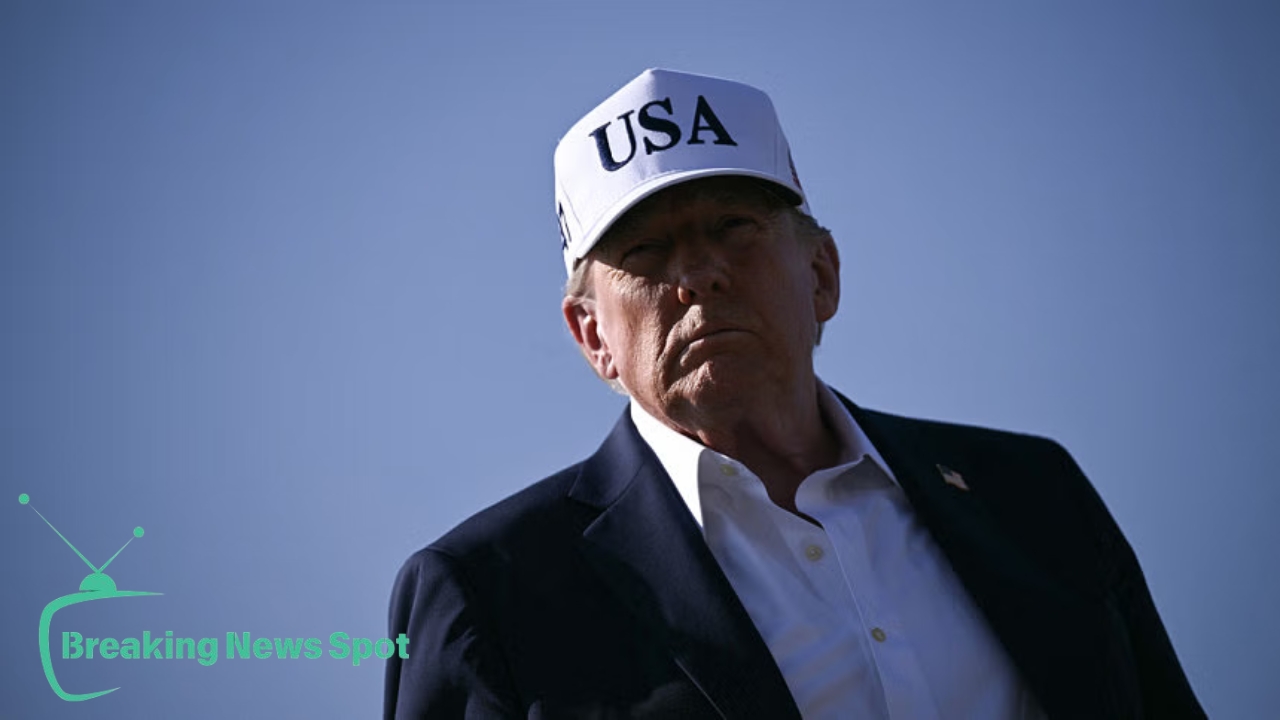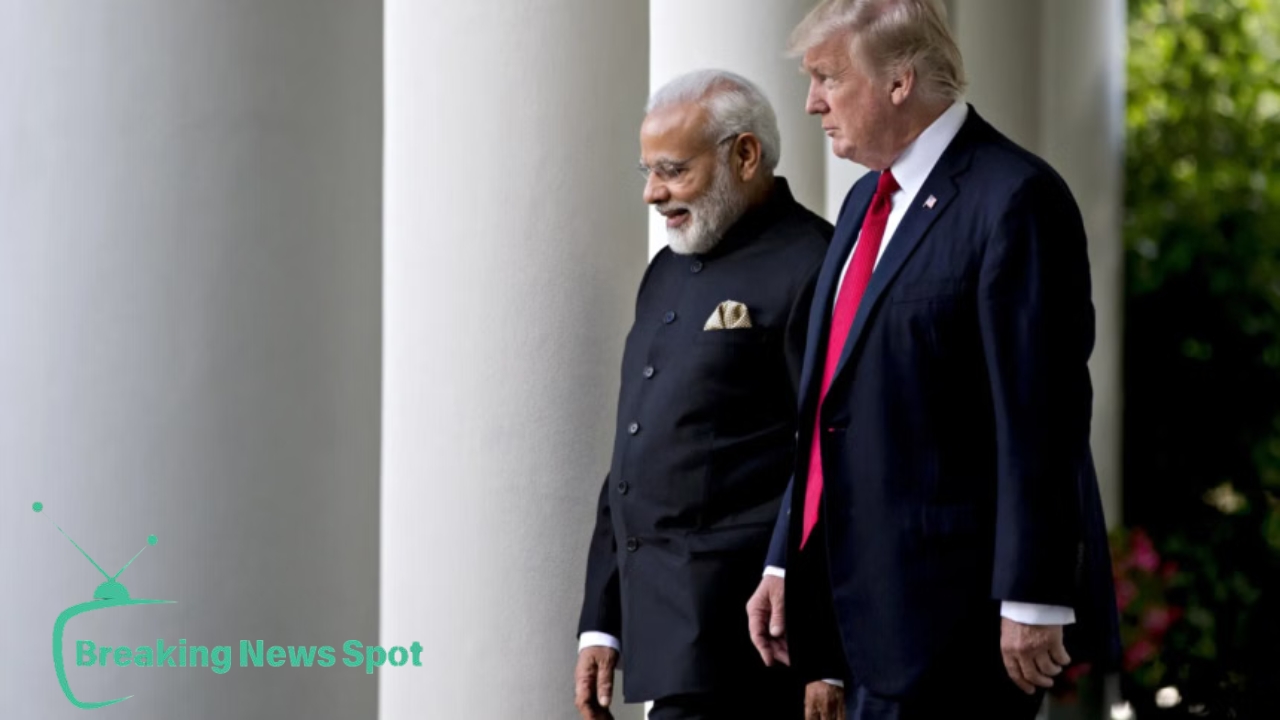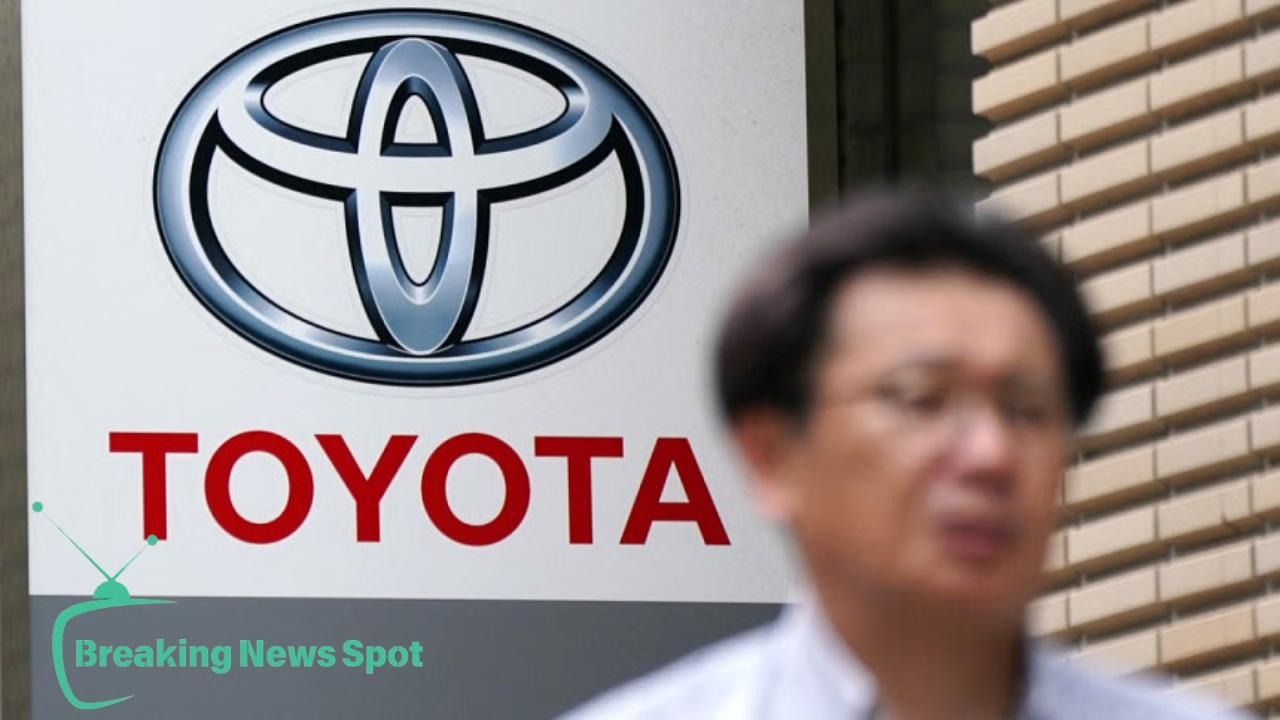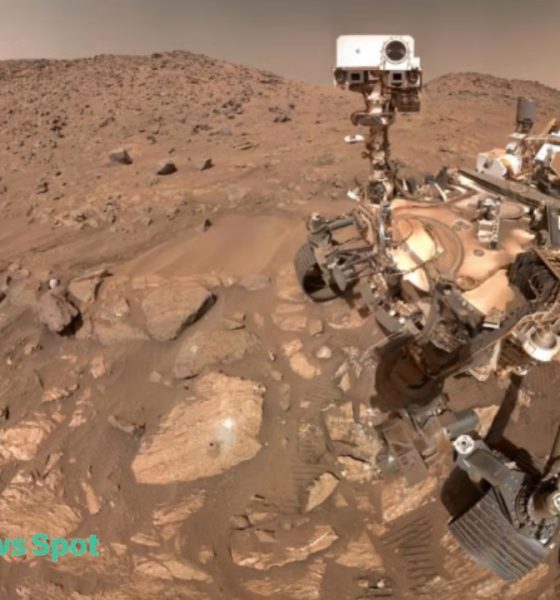World
The situation as the tariff deadline draws closer: Trump’s letters and who is speaking

On Sunday, US President Donald Trump stated that his administration is nearing completion on a number of trade deals and will notify other nations of increased tariff rates by July 9; the higher rates will go into effect on August 1.
Trump and his team have only been able to finalize a restricted deal with Britain and an unclear pact with Vietnam, despite pledges to work on 90 treaties in 90 days. A long-awaited agreement with India has not materialized.
The situation for a number of US trading partners who have deadlines this week is as follows:
European Union
Following a meeting last week in Washington with the European Union’s top trade negotiator, Maros Sefcovic, US officials declared they were making good progress with the 27-member EU. As of Friday, EU officials reported that although negotiations were still ongoing, little progress had been made.
According to one EU official, the bloc’s more stringent rules on social media and other internet firms than the US are not negotiable, and the US-proposed 17% tariff on food and agricultural exports is still a significant obstacle.
According to Bloomberg, EU officials have stated that while they are amenable to a US agreement that would impose a universal 10% tax on a large number of its products, they would prefer to obtain exclusions from sectoral duties that are currently or will soon be imposed on commercial aircraft, alcohol, pharmaceuticals, and semiconductors.
According to the article, which cited people with knowledge of the situation, the EU is also attempting to get US quotas and exemptions to effectively reduce Washington’s 25% duty on cars and auto parts and its 50% tariff on steel and aluminum.
JAPAN
Japan claims that despite protecting its national interest, it is still looking for a deal with the US. According to the Japanese government, Ryosei Akazawa, Japan’s tariff negotiator, had “in-depth exchanges” with US Commerce Secretary Howard Lutnick on the phone on Thursday and Saturday.
Following Trump’s criticism of Japan this week for allegedly refusing to import rice grown in the US and accusing the country of participating in “unfair” auto trade, the talks took place. He has also urged Japan to increase its oil imports from the US.
Trump stated on Monday that Japan might be one of the countries that receives a tariff letter and that it might be subject to up to 35% in tariffs.
INDIA
Trump has long called for a trade pact with India, but discussions have stagnated because of US tariffs on steel, agricultural products, and auto parts.
India, whose exports to the US are subject to 26% tariffs, has indicated that it is willing to lower its high tariff rates for the US but has refused to budge on Washington’s demands to open up the dairy and agricultural industries.
At the World Trade Organization on Friday, New Delhi also suggested retaliatory charges against the US, claiming that $2.89 billion of India’s exports will be impacted by Washington’s separate 25% duty on cars and some auto parts.
INDONESIA
In order to avoid a 32% tariff rate, Indonesia has promised to purchase $500 million worth of US wheat and reduce charges on important U.S. imports to “near zero” as part of its tariff negotiations. Garuda Indonesia GIAA is a state-owned airline. As part of a $34 billion agreement with US partners that is scheduled to be signed this week, JK also intends to purchase additional Boeing aircraft.
Ahead of the July 9 deadline, Indonesia issued a goodwill gesture on June 30 by easing import license requirements for some items and waiving import limits on plastics, chemical products, and other industrial raw materials, after being accused by some other nations of having too much red tape. As part of its tariff talks, Indonesia has also extended an invitation to the US to collaborate on an investment in a state-owned minerals project in Indonesia.
SOUTH KOREA
Though discussions would continue this week, South Korea has stated it will seek an extension on Trump’s July 9 deadline despite several rounds of negotiations and some initial agreements.
The national security adviser to President Lee Jae Myung, Wi Sung-lac, is scheduled to travel to Washington from July 6–8 to talk about a variety of bilateral matters. Additionally, US Trade Representative Jamieson Greer and other US officials were scheduled to meet with the nation’s trade minister, Yeo Han-koo.
Since South Korea already imposes almost no tariffs on US imports under a free-trade agreement, the US has directed its attention to other matters, such as defense expenditures and foreign exchange rates. The cost-sharing plan for the 28,500 US troops in South Korea is a frequent source of grievances for Trump.
THAILAND
Finance Minister Pichai Chunhavajira told Bloomberg News on Sunday that Thailand is making a last-ditch effort to avoid a 36% tax by providing more market access for US farm and industrial commodities, as well as increasing imports of US energy and Boeing BA.N jets.
Thailand has suggested lowering its own tariffs, investing more, and buying more American goods.
In addition to Thai investment that would generate US jobs, Thailand’s initial plan included steps to improve market access for US products and address transshipment breaches. Bangkok also promised to lower tariffs on US corn imports and increase US natural gas imports.
SWITZERLAND
In order to avoid a 31% tariff rate on items it ships to the US, Switzerland is looking at what concessions it might make. One such concession is giving the US more market access for produce like citrus fruits and shellfish.
However, Switzerland, which is home to the massive US investors Roche and Novartis, also wants guarantees that it may avoid pharmaceutical tariffs that Trump has threatened to apply in the future.
World
Trump gives Hamas a “final warning” on the captives.

On Sunday, US President Donald Trump issued a “last warning” to Hamas, stating that the Palestinian militant organization must agree to a settlement that will free the prisoners in Gaza.
“My demands have been accepted by the Israelis. It’s time for Hamas to come around too. I’ve told Hamas what will happen if they don’t accept. Trump stated on social media, “This is my last warning,” without providing any other details.
Hamas expressed its readiness to “immediately sit at the negotiating table” in a statement issued shortly after, citing “some ideas from the American side aimed at reaching a ceasefire agreement.”
White House envoy Steve Witkoff delivered Hamas a fresh ceasefire and hostage-resolution plan for Gaza last week, according to U.S. news agency Axios.
Although the White House has not disclosed any information on the plan, Trump stated late Sunday that “you’ll be hearing about it pretty soon,” painting a favorable picture of the talks.
“We had some excellent conversations. “There could be positive outcomes,” he informed reporters. “I think we’re going to have a deal on Gaza very soon.”
Trump sent Hamas a similar ultimatum in early March, stating that if it did not immediately release all surviving captives and give over the corpses of the murdered hostages, “it is OVER for you.”
The Hostages and Missing Families Forum, an Israeli advocacy organization, hailed the US president’s most recent action as a “true breakthrough.”
During the catastrophic October 7, 2023, onslaught on Israel, Hamas forces captured 251 prisoners, with 47 reportedly remaining in Gaza.
According to the Israeli military, 25 of them have died. Israel is requesting that their remains be returned.
– Assault on Gaza City –
Trump and Hamas’ remarks coincided with Israel’s army bombing a residential skyscraper in Gaza City on Sunday, the third in as many days, after Prime Minister Benjamin Netanyahu’s announcement that the military was “deepening” its attack on the strategic city.
When the Al-Roya tower was struck, witness Mohammed Al-Nazli told AFP that it “felt like an earthquake.”
Israeli bombardment on Sunday killed at least 48 Palestinians, according to Mahmud Bassal, spokesperson for the Gaza civil defense department.
Under the same pretext that Hamas had utilized them as observation posts, the air force has destroyed two other residential high-rises.
About 100,000 people have already fled Gaza City, according to Netanyahu, who blamed Hamas for attempting to obstruct evacuations and for using civilians as “human shields.”
Concerns that the already terrible humanitarian situation for Palestinians residing in the region may worsen have been heightened by the escalation.
Fearing for the safety of hostages said to be held in Gaza City, Israeli demonstrators flocked to the streets on Saturday to demand that their government revoke the decision to take the city.
According to an AFP count based on Israeli data, 1,219 persons were killed in the October 7, 2023 strike, the majority of them were civilians.
According to the United Nations-reliable health ministry numbers in Hamas-run Gaza, Israel’s retaliatory operation has killed at least 64,368 Palestinians, the majority of whom were civilians.
AFP is unable to independently confirm the tolls and information supplied by the Israeli military or the civil defense service because to media restrictions in Gaza and access issues in several regions.
World
Modi of India claims that relations with the US are still “very positive.”

Following US President Donald Trump’s reaffirmation of their personal friendship and his downplaying of his previous comments about “losing India” to China, Indian Prime Minister Narendra Modi said on Saturday that Washington and New Delhi still had “very positive” connections.
The trade comes amid tensions after Washington accused New Delhi of supporting Moscow’s murderous attacks on Ukraine by buying Russian oil and levied tariffs of up to 50% on Indian goods.
Link to Google News Follow The Daily Star’s Google News channel to stay up to date on all the latest news.
Right-wing populists Trump and Modi, however, have been close since the US president’s first term.
Modi wrote on X that India and the US had a “very positive and forward-looking comprehensive and global strategic partnership” and that he “deeply appreciate and fully reciprocate President Trump’s sentiments and positive assessment of our ties.”
Trump previously declared to reporters that he “will always be friends with Modi of course.”
“The relationship between the United States and India is unique. Trump downplayed his earlier comments about “losing India” to China, saying, “There is nothing to worry about.”
Trump previously declared to reporters that he “will always be friends with Modi of course.”
“The relationship between the United States and India is unique. Trump downplayed his earlier comments about “losing India” to China, saying, “There is nothing to worry about.”
A thaw between the two Asian giants was indicated last week when Modi made his first trip to China in seven years to attend a Shanghai Cooperation Organization meeting.
Trump has come off as annoyed in New Delhi as he tries to claim credit for his alleged Nobel Prize-worthy diplomacy in mediating peace between India and Pakistan after the two nuclear-armed neighbors engaged in their deadliest confrontation in decades in May.
Since then, India, which vehemently opposes any outside intervention on Kashmir, has ignored Trump.
World
Toyota cuts its profit forecast because of US tariffs.

The impact of US tariffs caused Japanese auto manufacturer Toyota to lower its year net profit prediction on Thursday to 2.66 trillion yen ($18.06 billion).
“Due to the impact of US tariffs and other factors, actual results showed decreased operating income, and the forecast has been revised downward,” the business stated in a statement. In Tokyo afternoon trading, its stock dropped 0.6 percent.
Japan and its vital auto industry suffered a serious setback in April when the Trump administration levied a 25 percent tax on Japanese automobile imports into the US.
In July, Tokyo and Washington announced a trade agreement that would reduce that tax to 15 percent and offer some relief to the industry, although it is unclear when that agreement will go into effect.
Additionally, it is unclear if the vehicle tax and other “reciprocal” levies will be capped at 15 percent or if they will be added to the ones that were already in place prior to Trump’s trade war.
Due to an existing 2.5 percent tax on the auto industry, the current duty is 27.5 percent.
Revenues in Toyota’s first quarter from April to June were up 3.5 percent, but net income decreased by 36 percent.
-

 Tech6 months ago
Tech6 months agoDo you frequently use ChatGPT? A study says that you’re lonely.
-

 Sports6 months ago
Sports6 months agoMessi comes back and scores in less than two minutes.
-

 Sports7 months ago
Sports7 months agoThey will make IPL a hit
-

 Entertainment7 months ago
Entertainment7 months agoDue to his mental health issues, David Kushner has cancelled his tour.
-

 Entertainment7 months ago
Entertainment7 months agoWhy did Juhi reject Salman?
-

 World7 months ago
World7 months agoIsrael continues its Gaza attack, killing a journalist and issuing evacuation orders.
-

 Fashion7 months ago
Fashion7 months agoBefore getting your ears pierced, here are some things to consider
-

 Tech7 months ago
Tech7 months agoXiaomi brings Redmi Note 14














